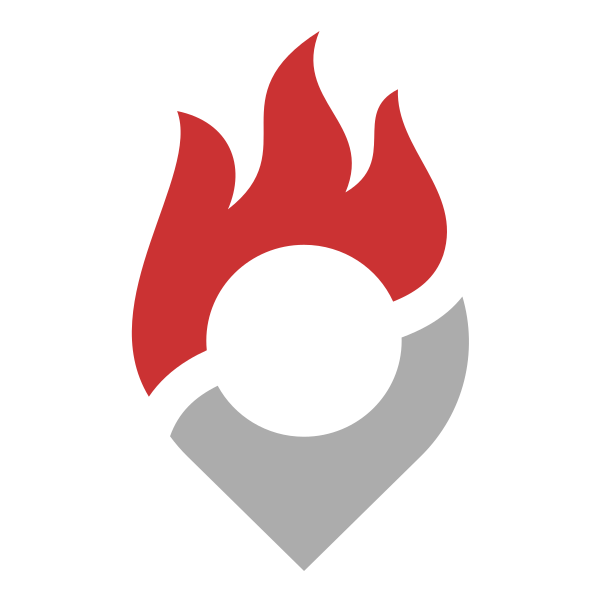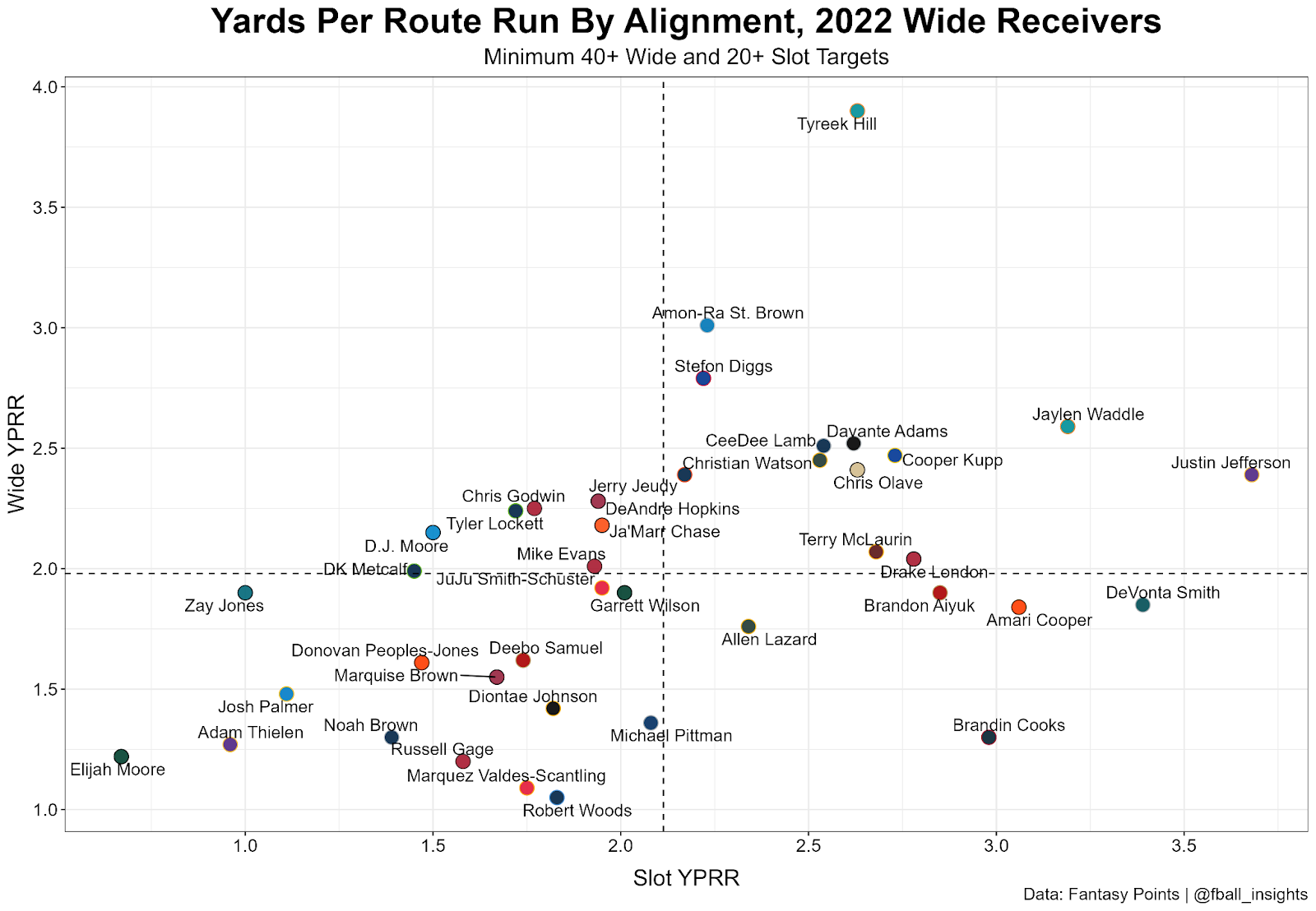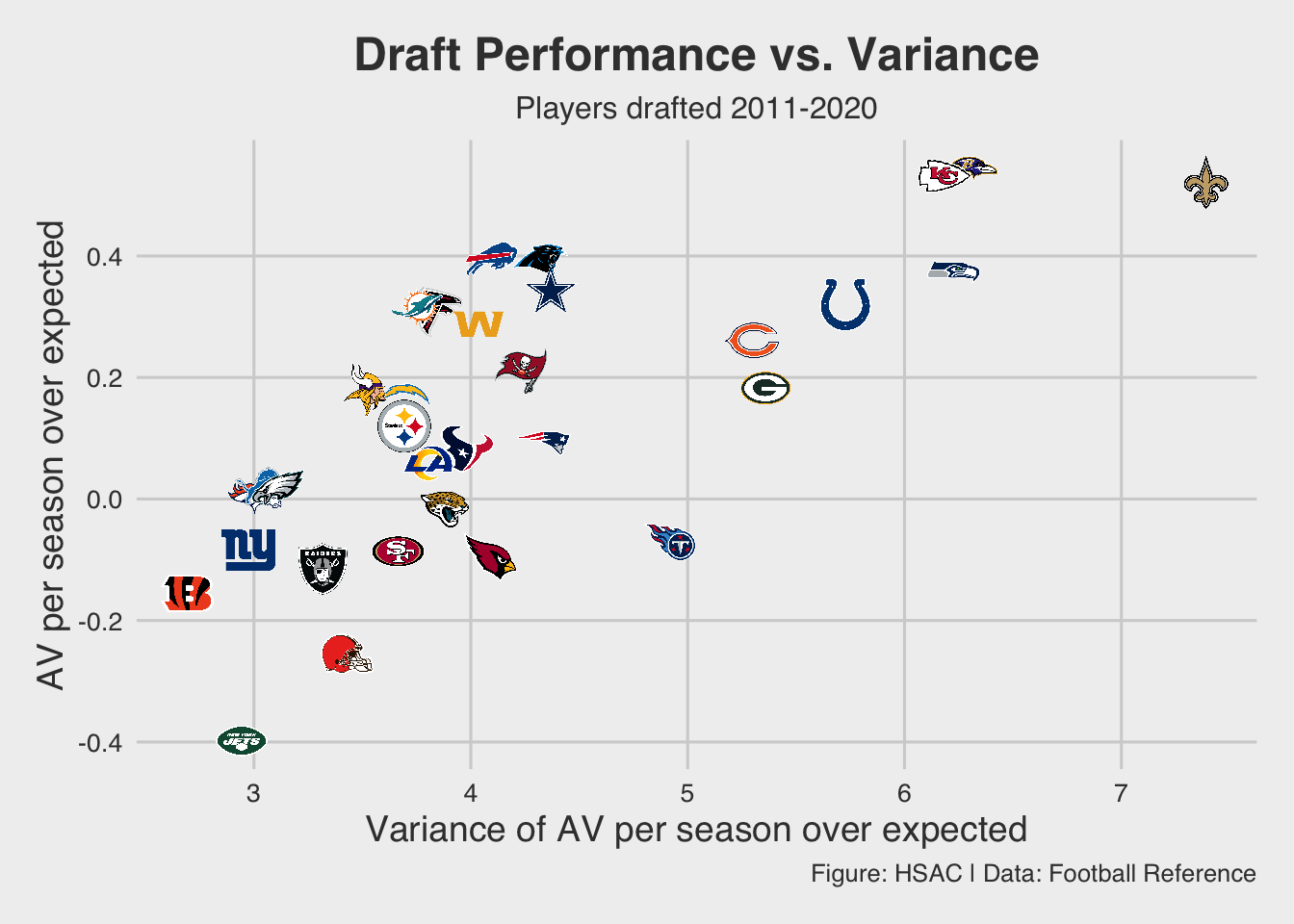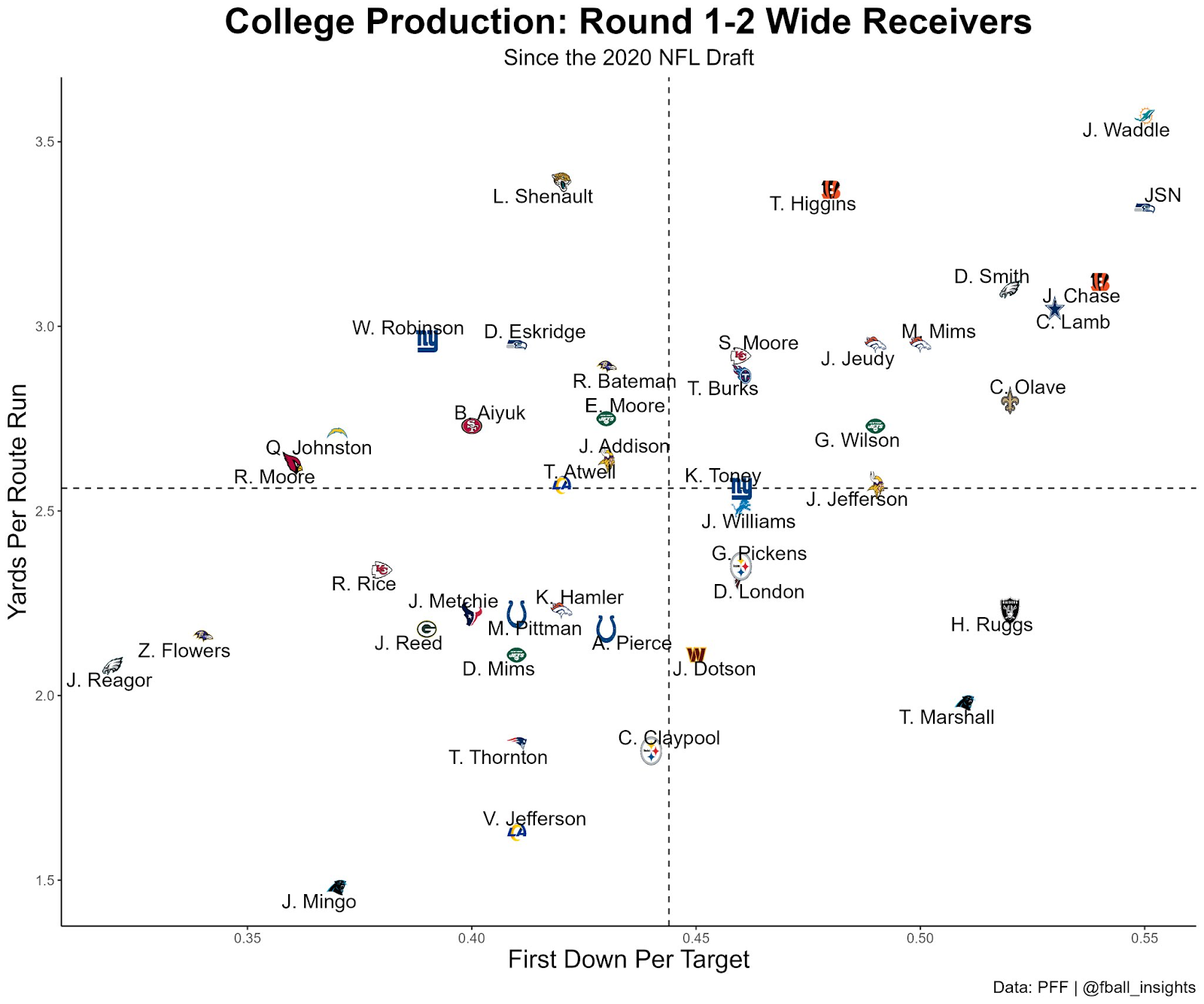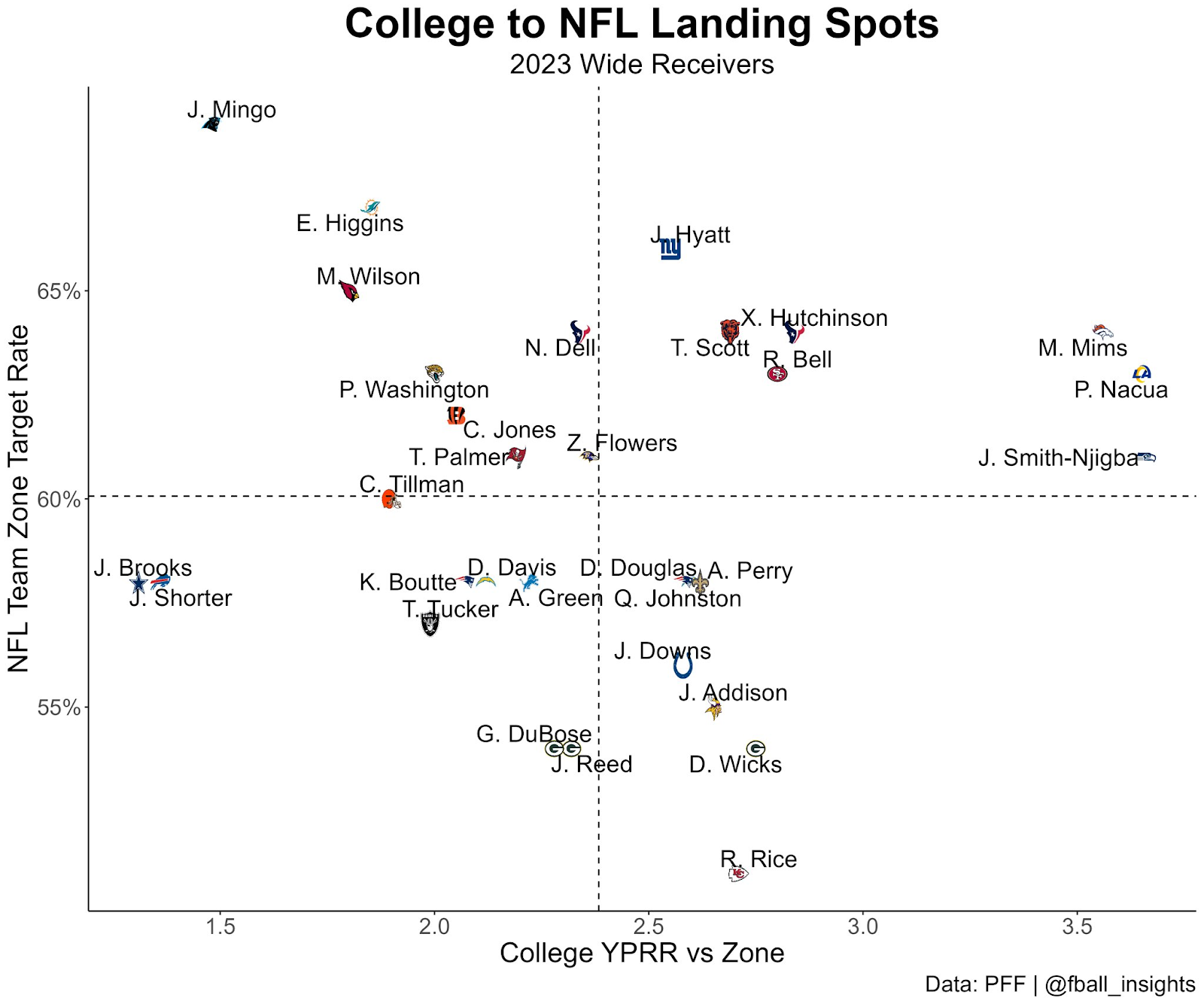In today’s article, I am offering you a comprehensive dynasty startup draft plan and strategy guide, where I'll be looking at FFPC ADP and highlighting the best values within each round. Essentially, this is what an ideal startup draft would look like to me.
FFPC Format (Tri-Flex Leagues)
The key difference between FFPC’s Tri-Flex format and more typical dynasty leagues is that starting lineups contain a superflex spot (QB/RB/WR/TE), and two “traditional” flex spots (RB/WR/TE). On top of that, there’s a premium of 0.5 extra points per reception to the TE position, so that’s what “TE premium” refers to — and it significantly increases the value of elite TEs. You can start a quarterback in the superflex spot (which we plan to do since starting QBs outscore all other positions on average), but you can’t in either of the traditional spots. There are no kickers or defense/special teams (I know… heartbreaking, right?).
Personally, I find Scott Barrett’s “Tank Then Bank” strategy to be the optimal approach. Essentially, we are more or less intentionally punting Year 1 of the league. If we were to finish last in Year 1, likely due to our conscious fade of the RB position, it would be ideal since it would put us in line for the 1.01 in next year’s draft. And if we finish last in Year 2, that equally places us in the same spot.
Your leaguemates will likely be drafting with shorter time horizons and a preference to win right away, so deviating from the pack via a longer-term approach creates a snowball effect of value and a serious edge over time.
Our macro goal in the startup is to trade back as much as humanly possible, given we’re obviously winning these deals (most often the case when moving back imo), and attempting to acquire a plethora of future first-round picks. When we make our own selections, we cater to high-upside, young players meshed with incredible values.
As previously mentioned, we are consciously fading RBs because of their poor ROI (not as good at retaining value as other positions). Caveats to this are the top handful of elite, young backs.
Projecting things out, we should have a perennial league-winning roster by Year 3. The young pieces we added in our startup age like fine wine and pair favorably with our accumulated picks to form a powerhouse, while also possessing enough assets for sustainable success… all the while our leaguemates lose ground after mortgaging their futures.
With all that out of the way, here are my favorite dynasty FPPC values in each round:
Rounds 1-2: Best Young Quarterbacks Available
We want quarterbacks here for a number of reasons. Quarterbacks have the longest careers, score the most points, and the position is inherently scarce, both in real life and in fantasy. There will likely be cornerstone WR/RBs at our disposal in any given rookie draft, but starting QBs don’t grow on trees. Remember, this is a superflex league, so most of your competition will similarly treat it like a 2-QB format. There are 32 starters in the NFL, and if every roster in a 12-team league starts two of them, that means 75% (24/32) of the available pool is starting any given week, making the fight for the upper-echelon performers similar to that of elite RBs and thus, an incredibly valuable position in lineups.
Bombing the early parts of your startup can put you at a serious disadvantage now and in the future when the rest of your roster finally starts to hit its stride.
Round 3: Kyle Pitts | 24.64 ADP | TE1
Atlanta Falcons TE Kyle Pitts is a unique player for his position because of his ability to succeed from a variety of alignments, most notably on the perimeter. Since entering the league, Pitts ranks fourth among all pass catchers with 200+ routes in YPRR from the outside at 2.73.
This is an incredible metric, given the relatively large sample of pass catchers. You can make the argument that Pitts, conservatively, is a top-10 outside WR. Based on this crazy stat, I don’t think it’s far-fetched to say that Pitts offers Travis Kelce-like upside based on his talent.
Pitts was on pace for 100 targets during his sophomore season, but he unfortunately suffered a season-ending injury in Week 11. The ability to stay healthy and questionable volume from externals collectively make up the skepticism surrounding Pitts, but I'm not worried about these things long-term.
Among TEs with 50+ targets in 2022, three eclipsed a first-read target share greater than 25%: Pitts, Kelce, and Mark Andrews. Compartmentalize this with Pitts’ league-worst rate of catchable targets (63%), and it's evident that his future production is on an upwards trajectory should he stay healthy, even if his situation is subpar in the near term.
If we view Kelce as a WR instead of a TE, he’s finished as a top-five WR in this format for six straight seasons. Pitts is just 22 years old, so knowing that he’s got plenty of time for development with his position’s inherent age curve and that massive, theoretical receiving upside, he represents a rare bird that would go a long way toward us building a dynasty superpower.
Round 4: Christian Watson | 48.79 ADP | WR17
Frankly, I'm not in love with Christian Watson at his current ADP. Green Bay’s present situation at QB and Watson’s underlying rookie data raise questions about his future stability in production. That said, he’s still the best value within a brutal ADP range of dead-zone RBs and veterans on the wrong side of 30.
Still, if you’re unable to trade down from this spot responsibly, Watson is clearly the guy you want.
Watson (age 24) heads into his second year with a QB who's thrown just 83 career passes in Jordan Love. That’s massive uncertainty relative to future Hall of Famer Aaron Rodgers, but this presents Watson with a chance to become Love’s clear alpha WR1 via athleticism (97.8 SPORQ) and his ability to line up all across the formation. He was the closest rookie to Chris Olave in terms of alignment diversity, recording a 2.45 YPRR out wide and 2.53 from the slot, and rests comfortably alongside some great names from the 2022 season:
This equally provides him with multiple avenues to produce alongside the other weapons in that WR room.
Watson ranked best among rookies and 10th among all WRs in FPG from Week 10 on, once he first started to receive full-time usage. He’s capable of erupting any given week, so the Watson thesis boils down to his volume and sustainable/competent QB play. Weighing the potential risks against rewards, and it’s evident that Watson is the best value within this ADP range.
Round 5: Quentin Johnston | 55.71 ADP | WR21
Among all the players drafted in Round 5, fellow Round 1 rookies Quentin Johnston and Jordan Addison stand out most to me.
Addison fills the WR2 role for Minnesota right away. He can run a full route tree from Day 1 and enhances the floor of their win-now offense behind veteran QB Kirk Cousins in a lackluster NFC.
Johnston equally finds himself in a “playoffs-or-bust” environment with the Chargers. However, Johnston is not as polished of a weapon and ranks third on the depth chart behind veterans Keenan Allen/Mike Williams.
All that being said, I like QJ here because of his actual chance to develop over the next year and expand his WR1 potential, something that Addison doesn’t have as high of a likelihood of accomplishing due to athletic/elite trait limitations. QB Justin Herbert, the younger and more talented player than Kirk Cousins, isn’t going anywhere, so that, combined with the inevitable subtractions of Allen/Williams in 2024-25, makes Johnston’s stock an appreciating asset.
Round 6: Jameson Williams | 65.29 ADP | WR26
Lions WR Jameson Williams has notably compiled a list of woes dating back to his final college performance. This, along with his six-game suspension for violating the NFL’s gambling policy, lay on the questions surrounding his viability as an elite dynasty asset.
Williams barely played as a rookie (ACL), so most of my justification relates to Williams’ high-end prospect profile – Scott Barrett’s rookie model even had him ranked as the overall WR2 in the 2022 class (here).
Williams’ big play ability from the outside has been impressive. He caught 72 passes after removing screens while in college, per PFF. His 8.2 YAC/Reception on these plays ranks third among Power-Five receivers since 2014, on a list including CeeDee Lamb (8.5), Hollywood Brown (8.2), and Jaylen Waddle (8.1).
Landing a talent like Williams could reap benefits a year or two from now, and that’s why he’s an enticing receiver in dynasty formats. He just turned 22 years old in March, and his rare play-making abilities on the perimeter complement teammate Amon-Ra St. Brown nicely in that lavish Detroit Lions offensive unit.
Round 7: Brandon Aiyuk | 77.86 ADP | WR31
49ers WR Brandon Aiyuk accrued each of his first three NFL seasons before turning 25 years old. At worst, playing in one of the league’s most prolific offenses represents a stable weapon with plenty of productive years still left in the tank.
But Aiyuk is even more intriguing when you consider his overall progression, combined with the surrounding talent in San Francisco. During stretches where teammates Deebo Samuel and/or George Kittle were sidelined with injuries, he’s been a more than capable WR1. Since entering the league, Aiyuk has averaged 17.8 FPG in five games without both Deebo/Kittle, and 15.7 FPG in 12 games missing just Deebo.
For all the Deebo truthers reading this, he still finished the 2022 season with a first-read target share of 24%, while Aiyuk led the team at 28%.
Aiyuk was in the doghouse at the start of his sophomore season, but he’s shaping out to be the most stable wideout inside one of the league’s most potent offenses, and that’s why I like him in this round.
Round 8: Pat Freiermuth | 88.33 ADP | TE8
I still find there to be an edge in recognizing that TEs are inherently valuable in this dynasty format, and bring most of their real-life value towards the end of their rookie deals/into their second contracts. It’s inherent within the position itself and from a fantasy perspective, as Kelce, Andrews, Goedert, and Kittle are all balling out during their late 20s to early 30s, not to mention players like TJ Hockenson and Evan Engram are hotter names now than when they first hit the league.
Freiermuth is no exception and has checked boxes over the course of his first two seasons in Pittsburgh. Since entering the league, Freiermuth is top seven at his position in full PPR points, and top ten in targets (177), receptions (123), and receiving yards (1229).
Freiermuth (age 24) now lines up alongside Darnell Washington, a willing blocker at TE who even nicknamed himself the “sixth lineman” after the Steelers drafted him this past spring.
I’m all for one TE on the roster taking up the “blocking” stereotype, since it can allow the route-friendly guy within a positional room to execute on greater receiving opportunities.
This has been discussed ad nauseam with Dalton Kincaid and Dawson Knox in Buffalo, but the greater example of this “role-recognized” 12 personnel can be found in Pittsburgh.
Among tight ends with 95+ targets last season, Freiermuth ranked third in threat rate at 26% (targets per pass play snap). The top two were Andrews (33%) and Kelce (30%).
Freiermuth is tracking toward top-five scoring at the position in 2023 and beyond.
Round 9: Devon Achane | 103.62 ADP | RB24
Dolphins RB Devon Achane will be our first running back off the board. I’m buying into the Mike McDaniel offense and presume that Achane will see an expanded role within it following the 2023 season.
Achane (23) has questions surrounding his long-term volume stemming from his smaller stature. Still, his skillset as both a runner and passer, along with his speed in McDaniel’s offense, collectively makes him an intriguing add.
Other than size, the present setbacks limiting his rookie year upside are backfield mates Raheem Mostert (31) and Jeff Wilson Jr. (27), as well as free agent Dalvin Cook still looming.
The fact that McDaniel brought both of these veterans over from Miami is a good signal that he rides out “his guys” as much as possible, making Achane an investment piece for the backend-three years of his rookie contract.
Round 10: Marvin Mims | 121.41 ADP | WR45
If you followed me throughout this past draft cycle, this one shouldn’t come as a surprise.
Broncos second-round WR Marvin Mims is a very intriguing prospect from an analytical perspective. Mims is the first draft pick of the Sean Payton era in Denver, which means something given that New Orleans accrued the most approximate value (AV) over expected at the position from 2011-2020 (via Pro Football Reference data).
Mims has showcased explosiveness and success lining up from the outside and in the slot during his three seasons at Oklahoma.
When we look at production (yards per route run) and impact (first downs per target) metrics from Rounds 1-2 receivers, Mims sits nicely with some of the more notable names:
He’s also a quintessential zone coverage beater:
Best College YPRR vs Zone coverage since 2018 (min 450 routes)
— Football Insights 📊 (@fball_insights) February 19, 2023
1. CeeDee Lamb - 3.93
2. Jerry Jeudy - 3.70
3. Marvin Mims - 3.56
4. DeVonta Smith - 3.53
5. Skyy Moore - 3.47
Courtland Sutton and KJ Hamler have underperformed and proven to be unreliable in the health department (Payton has also tried to trade them all offseason), so even if it’s not 2023, Mims is an awesome dynasty asset for the future.
Round 11: Rashee Rice | 129.89 ADP | WR49
The reigning Super Bowl champions have now gone back-to-back drafts selecting small-school receivers in the second round — last year it was Skyy Moore (Western Michigan), and this year it’s Rashee Rice out of SMU.
Throughout this post-Tyreek Hill era, we’ve witnessed Kansas City ink secondary options in JuJu Smith-Schuster/Marquez Valdes-Scantling through free agency, as well as trade for a polarizing first-round talent in Kadarius Toney (100.06 ADP).
JuJu did the good ‘ol “ring and fling,” departing in free agency after the Super Bowl, while MVS/Toney remain question marks from both consistency and health standpoints. As long as future Hall of Famer Travis Kelce is still running routes, which could start to diminish over the next few years, he’ll command most of the work from QB Patrick Mahomes. Having said that, the Chiefs will inevitably need a new alpha to throw to.
So what makes Rice an intriguing dynasty asset? Well, his size and range of outcomes are more conducive to prototypical WR1 fantasy production down the road than the likes of Moore or Toney, who may carry strong performances as gadget/slot weapons, but likely struggle bringing that on a weekly basis over the course of multiple seasons.
I like this pick and am interested to see where it stands a few years from now.
Round 12: Trey McBride | 135.67 ADP | TE16
Former Colorado State Ram Trey McBride was the first tight end selected in the 2022 NFL Draft, but didn’t light things up in the production department during his rookie season with the Arizona Cardinals.
Even if you were to make the case that teammate Zach Ertz was the better option at TE1 last season, he’s an aging veteran seven months removed from ACL/MCL surgery who won’t be around for the bulk of McBride’s rookie contract years.
Sure, Arizona will be a dumpster fire this coming year, but the subtraction of specific pass catchers should open up doors elsewhere for McBride.
Chosen Anderson, AJ Green, and DeAndre Hopkins (10.7 targets per game in 2022) were three of four players with 100+ routes at the X WR last season. All of them are gone in 2023, making Hollywood Brown the likely beneficiary.
From the slot, Hollywood and Ertz were two of the top three Cardinals in action, so with Ertz’s health and Brown’s presumable shift out wide, opportunities could grow for McBride.
Receivers Greg Dortch and Rondale Moore aren’t going anywhere, but they’re both small even by slot standards, and Ertz was top ten at his position in slot routes (181) and targets (36).
McBride is a solid investment for year two and beyond if you were as much of a fan of his college profile as we were.
Round 13: Tank Bigsby | 143.56 ADP | RB41
Former Auburn RB Tank Bigsby finds himself behind Travis Etienne on the Jaguars’ depth chart, but there are a few things that make this pairing stand out and intriguing over the next handful of seasons.
Firstly, Bigsby is a Doug Pederson regime draft pick. Etienne was snagged in the first round during the legendary Urban Meyer era. As hard as it is to quantify, loyalty to picks (especially at the running back position) matters with coaches.
Secondly, and tying off that notion, Bigsby is more of a mauler after contact. If this were also the case with Etienne, we would’ve seen a higher rush attempt share than just 49% last season.
More importantly to me, Etienne converted just 4 of 40 red zone carries into touchdowns. Also, just 57% of Etienne’s rushing yards came after contact, bottom three amongst those same qualifiers.
We commonly see this type of profile with volume hogs on the receiving end of the spectrum. However, Etienne had the lowest target per route run (19.9%) among backs with 40+ targets on an adequate number of routes.
Etienne mildly struggled in pass protection and ball security, allowing 9 QB pressures and fumbling 5 times in the regular season, per PFF. Meanwhile, Bigsby had just 1 fumble and pressure throughout his final season at Auburn.
It’s hard for me to think this Bigsby selection was solely a product of his college profile.
Round 14: Zach Evans | 161.85 ADP | RB47
I will concede that new Rams RB Zach Evans was my one of favorite finds while evaluating RBs this offseason. Draft capital, relative size, and lack of sheer production while at Ole Miss are all valid concerns with Evans, but I do think that his pathway to opportunities has more hope than what’s being led on (Zeke or Lenny: if you’re reading this, please sign elsewhere).
Taking a look at rush success on perfectly vs non-perfectly blocked runs in college, Evans exhibits a solid floor independent of his environment.
Highest EPA/play, Power five RBs since 2013 (min 315 plays)
— Football Insights 📊 (@fball_insights) March 13, 2023
1. Travis Etienne - 0.45
2. Zach Evans - 0.43
3. Javonte Williams - 0.38
4. Ezekiel Elliot - 0.37
5. Joe Mixon - 0.36
The biggest competition for work in that Rams backfield appears to be a (now) healthy Cam Akers.
Despite the Rams’ quality run blocking from their offensive line, Akers hasn’t been an impressive rusher.
And Akers has struggled to stay healthy throughout his time in the NFL — most notably an Achilles tear — which means Evans could have some more opportunities than you’d expect given his draft capital.
Round 15: Ryan Tannehill | 172.87 ADP | QB35
Ryan Tannehill is not getting any younger. He’s compiled a few injuries over the last couple seasons, but Tannehill remains severely undervalued and presents himself as a solid QB3.
Tannehill averaged 0.42 fantasy points per dropback last season, top-15 among QBs with 350+ dropbacks on the season (tied with Trevor Lawrence, Kirk Cousins, and Jacoby Brissett). He also finished fourth in YPA among quarterbacks with 300+ attempts (7.8).
And from 2019-2021, Tannehill averaged 18+ FPG, ranking as the QB7 amongst players with 45+ games over that timespan.
He arguably played behind the worst protection and receiving corps in the NFL last year, both of which should improve in 2023 (especially if the team signs DeAndre Hopkins, with whom they’ve had open interest). All we’re looking for is viable starting QB play, and a healthy Tannehill has been nothing short of competent throughout his time with Mike Vrabel and the Titans.
Round 16: Michael Wilson | 194.65 ADP | WR74
Cardinals WR Michael Wilson has nice upside and projectable size from the perimeter in an offense where material opportunities could surface (Stanford wasn’t an ideal system to produce in).
Wilson is considered by Jim Nagy to be “the top sleeper” in this year’s wide receiver class. He put up an impressive week down at the Senior Bowl and could make for a big target in (presumably) a ton of negative game scripts for Arizona alongside Hollywood Brown, Rondale Moore, and Greg Dortch.
According to PFF, Wilson saw over 75% of his college snaps from the outside, including his senior season where he put up an impressive 2.30 yards per route run.
Wilson’s YPRR, along with his average depth of target, rose each year of his collegiate career. This continual improvement at the position, combined with moving further downfield on targets, pairs up nicely with his inherent strength of beating defensive backs off the line of scrimmage.
Standing at 6’2” and over 210 pounds, Wilson separates himself from receivers like Dortch, Moore, and Brown inside that receiver room.
He should get the opportunities to prove himself, so Wilson is another high-upside addition to our roster.
Round 17: Tyquan Thornton | 196.5 ADP | WR77
Patriots WR Tyquan Thornton may be in year two of his NFL career, but some would argue it’s his first chance at producing within a legit offense now that defensive-minded Matt Patricia is gone and Bill O’Brien has taken the reins as OC.
I wasn’t a fan of his college profile at Baylor (contrary to, obviously, Bill Belichick and Scott Barrett), but college profiles don’t necessarily translate to opportunities at the next level. Thornton notched just 45 targets last season, but New England seems to have drafted him with a purpose.
As Taylor Kyles points out, Thornton was deployed as a “Z” wide receiver early on in his rookie season, a role that Jakobi Meyers owned and is now up for grabs following his departure in free agency.
Important to remember the Patriots were using Tyquan Thornton in Jakobi Meyers' "Z" role as early as the rook's first preseason game. NE has plans for the 2022 2nd rounder.
— Taylor Kyles (@tkyles39) March 14, 2023
Ran many of the same routes and inserted on gap runs like we've seen from Meyers and Edelman in the past pic.twitter.com/10Sk0VsT3n
There will be some competition with Kendrick Bourne for opportunities, and it remains to be seen how much the additions of Mike Gesicki and the rookies impact things, but Thornton has some buzz in OTAs and is worth a late-round flyer.
Round 18: Rashid Shaheed | 211.18 ADP | WR83
After going undrafted in 2022, Rashid Shaheed turned some heads in his limited work as a rookie with the New Orleans Saints.
Shaheed put up a 2.79 yards per route run, albeit on a small sample of just 34 targets. But you can’t just throw that number out- that is elite production from a rookie WR. Shaheed brough a dynamic element that isn’t necessarily there within the repertoire of fellow teammate/rookie Chris Olave.
Shaheed is an awesome late-round stash if you’re under the premise that Michael Thomas doesn’t return to the same form we know from just a handful of seasons ago.
Last year, Shaheed saw a higher percentage of his routes at X receiver (45%) than Olave (21%). As an X receiver, Shaheed put up an impressive 3.29 YPRR, finishing even better than the first-rounder (2.95).
Opportunities for WRs are inherently scarce within this offense, even Olave should’ve seen more volume despite already having put up a 1,000 yard campaign. But they did both garner targets downfield, which can be credited to Alvin Kamara owning targets underneath for some time now.
Shaheed showed enough on a limited sample of work from the outside to make him worth a late round flier.
Round 19: Puka Nacua | 216.76 ADP | WR90
Here is 2021 Offensive Player of the Year Cooper Kupp on fifth-round pick Puka Nacua from Rams camp:
Puka Nacua Szn.
— LaQuan Jones (@RealDealFantasy) June 7, 2023
pic.twitter.com/6AS9TuTRUh
"He's pretty special. I think if he can stay on a good trajectory, he's going to be a very good football player in this league…”
Nacua caught my attention later on in the draft process. He tallied 20 targets across his first two college seasons at University of Washington, then transferred to BYU and dominated from 2021-22.
Nacua was particularly a beast against zone. Many of the successful WRs drafted in recent years have proven to beat zone in the college ranks. Likewise, Nacua averaged 3.48 YPRR over the last two seasons. Among all combine-invite wideouts from this year’s class, that ranks second best behind only Jaxon Smith-Njigba (3.73).
Considering the Rams’ low projections for the 2023 season, as well as a thin WR room, Nacua has the potential to accrue volume alongside Kupp in negative game scripts.
Round 20: Sam Darnold | 229.12 ADP | QB36
Sam Darnold was competent throughout his stint with the Panthers. Now, the former top-five pick is battling another in Trey Lance at 49ers camp for a seat at the table with Kyle Shanahan as the team’s QB1.
That is, of course, unless Brock Purdy returns healthy and picks up where he left off last season.
Purdy was an awesome value for San Francisco after Jimmy G went down during the regular season. The fact that they even reached the NFC Championship game was incredible, but it’s far more of a testament to Shanahan & Co. than it is to Purdy.
With the NFC up for grabs and the team in win-now mode, it’s hard to imagine any type of leash for Lance when the moment strikes. And I personally think Darnold has a stronger chance at emulating the Purdy of 2022 than Purdy himself.
We haven’t seen Darnold in positive game scripts, and being on poor teams while consistently playing from behind inevitably makes any quarterback vulnerable to “seeing ghosts.” Darnold is just 26 years old and, at the very least, is a fine depth addition in the later rounds of startup drafts.
Round 21: Chris Rodriguez Jr. | 254.88 ADP | RB80
Washington Commanders draft pick Chris Rodriguez Jr. notched a total of just 20 receptions in four full seasons at the University of Kentucky, but what he brings to the table as a ball carrier makes him quite the intriguing late-round snag.
Rodriguez forced 176 missed tackles on rush attempts throughout college, second-most in this draft class to Bijan Robinson (via PFF).
Among Power-Five running backs with 500+ rush attempts since 2014, Rodriguez ranks top ten in missed tackles forced per carry at 0.30.
Among those same qualifiers, here are the RBs with the highest yards after contact per carry:
- Travis Etienne (4.51)
- Bijan Robinson (4.40)
- Jonathan Taylor (4.24)
- Bryce Love (4.14)
- Chris Rodriguez Jr. (4.00)
- Dalvin Cook (3.93)
If a RB lacks receiving volume in college, they better be a bruiser on the ground. Not only is this Rodriguez’ calling card, he put it on display across four full seasons against SEC defenses.
Rodriguez could easily command high-value touches on the goal line and even earn a workload between the 20s if he’s shredding defenders like he did at Kentucky.
